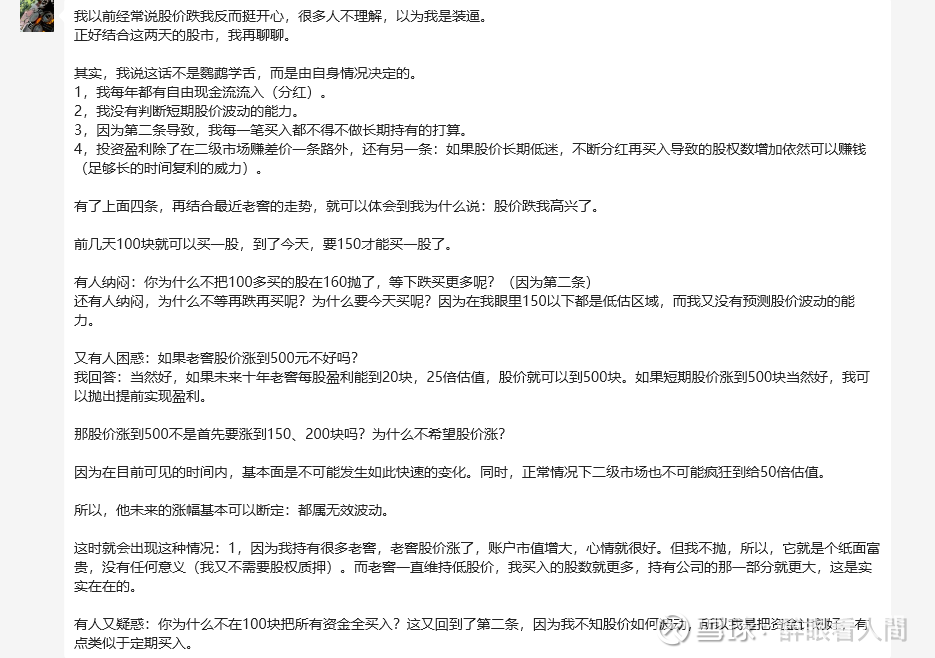※散户乙选择股票的条件 !
一、体系基础:roe、PB、分红率。
“你在净资产附近买入的长期投资回报率就会接近这个公司的长期平均净资产收益率。如果一个公司的净资产收益率可以持续很高,即使你以高出净资产很多的价格买入,也会很快享受到净资产收益率。”
二、选股条件
1、定性:关注业绩长期的稳定性。也是保证净资产收益率能长期稳定。
(1)他的资产不是随着时间折旧,而是随着时间增值,越久越值钱。
(2)它的产品无论朝代如何更替还是社会发展到什么程度,都是被需要的。
(3)他可以依靠内生性增长,不需要再投入就可以实现长期稳定发展。
(4)经营历史太短的,没有历史参照的,就不要了,如果数据不错的,可以列入观察长期跟踪。
(5)我倾向于生意模式比较简单可以大概长期预期的公司,我一般不太分行业。但民营企业我一般又会特别慎重一点,最后真要下重手,心里总是有点忐忑。比如分众和嘉化这种还不错的公司。
(6)符合以上四条的,我大致可以定量了,列入长期观察,等待回报率合适的机会。有些公司我会时不时的念叨念叨。
(7)我目前不太奢望找一个当下很小不起眼,未来能发展壮大的优秀公司。我没那个慧眼,也不是业内人士。我最后的选择应该是各方面都比较稳妥,但长期收益率尚可的公司。而各方面都优秀的好公司,就只能心理阴暗地等它出现黑天鹅
如果业绩波动大,就要看下历史最低会到多少。有了最坏打算垫底,其他就不在话下。
2、定量:
(1)净资产收益率。因为这是决定我长期投资回报的重要参数。净资产收益率比较高的一般能达到15%以上的要重点关注,收益略低但股价接近净资产且分红较高的也可关注。
(2)总资产收益率。两者越接近越好。这不单是检验净资产收益率成色,也决定了该股的净资产收益率是否适用作投资长期回报率的参数。
(3)他的分红率要高。很多人担心小股东没决策权,赚了钱你又没分配权,把自己当股东不现实。所以我很看重分红率。
(4)负债率超过50%是个警戒线要仔细看下是咋回事,如果是靠长期高负债经营的一般就不要了。
(5)现金流不错。
PS:定量的标准:roe>15%;资产负债率<50%;分红率>30%;上市时间>5年;经营活动净现金流>净利润
最后,符合我的条件了,就要看下股价比净资产高出了多少。这决定了我拿到的股息率,以及,我多久可以真正开始以净资产收益率来得到投资回报。
三、最终选择
上述这些都看懂了后,得出的回报率比你目前目所能及的其他投资回报率高,就买入。看不懂的,也就有了:不懂不做。这一重要原则。
